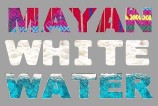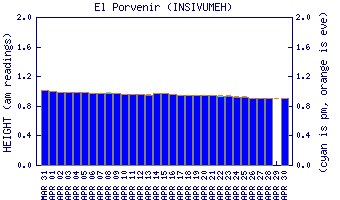 rivers | guidebooks | forums | tips | other
rivers | guidebooks | forums | tips | other.jpg)
Class: II; Ave. Gradient: 1.4 m/km; Portages: yes; Length: up to 25 km; Time: up to 7 hours
Season: June to January; rafts? no; Highlights: the cave mood lighting; Crux move: the negotiation phase
Water Quality: good; Water Temperature: cool
PI: road bridge (178 m); TO: Camposanto (174 m), Mucbilhá (165 m), balneario (150 m), or Raxruhá (143 m)
Description: (click here for general notes about my descriptions)
The Candelaria Caves are a natural wonder. The most special thing about them is that you can paddle through them! That’s right—you are on a river, underground, in the dark. Well, not always: the darkness is broken up from time to time by the lovely “windows” (side entrances into the cave). What is also special is that the river enters and exits a series of caves, eight in total. Beautiful jungle welcomes you as each cave releases you. It is way better than the “river float” at the water park, and you will have it to yourselves (unlike the Caves Branch Caves in Belize that is overrun with tourists).
A full description is in the Mayan Whitewater Guatemala guidebook.
Descent History: The descent history is not fully known. The Frenchman Daniel Dreux was the first one to map the cave system. Dr. Bojorque, owner of the Hotel Cancuen, was likely the first to raft the lower caves. I ran the whole thing once, with George Pratsinak, in December 2007. We actually met Dr. Bojorque that day, on the river in between caves—it was quite the chance encounter.
Flow Notes: There is no online gauge, but the Río Pasión "El Porvenir" gauge can give you a faint hint about levels. In 2014, 5.7 on the gauge gave 100 cfs in the caves, a better-than-average flow. The Río Candelaria is often quite low, which is a real issue near the PI bridge and for inflatable boats. Once inside, plastic boats will slide over everything, and the experience is worth the abuse. The river is rarely too high for kayaks, except for the issues with the low ceiling in the last cave as explained above.
 |
Nearby Tourist Attractions: Cancuén Mayan ruins.